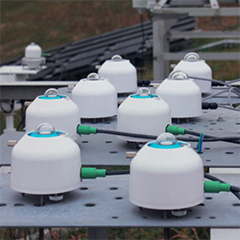EKO Instruments, Tokyo, Japan, is well known for its advanced measurement instruments for solar energy industry. Irradiance instruments such as pyranometers, pyrheliometers and sun trackers can be found at solar monitoring stations on solar photovoltaic (PV) and concentrated solar power (CSP) plants around the world. EKO I-V curve tracers are widely used to monitor the electrical properties and the performance ratio of the PV modules on site and in the laboratories.
Furthermore, different PV technologies are known to have different spectral responses, the EKO spectroradiometers have been a crucial tool for scientific research and advances on the outdoor PV performance evaluation.
What is less known about EKO Instruments is its work in generation of solar energy. Since 2012, the company has built two corporately owned PV parks with a total nominal power of 2.7MW. These PV parks not only contributed to a great experimental platform for new developments, but also have a tremendous impact on their general ecological strategy.
The ISO14001 certification was acquired in 2006, which is the international standard that specifies requirements for an effective environmental management system (EMS). EKO acts with a social mission to make a contribution for the prevention of pollution in every aspect recognizing that the global environmental preservation is the most important issue.
Solar energy development in Japan
In Japan, the feed-in-tariff policy for solar power was introduced in 2012 revising an older scheme for selling and purchasing PV electricity, and starting the era of fast developments of large-scale PV parks in the country also called ‘Mega Solar’. Many PV parks were built around the country making Japan one of the fastest growing solar energy market, in 2013-2014 Japan was the world’s second largest market for PV installations.
Following these developments, EKO designed a monitoring system for solar power generation as a new business direction based on the extensive experience in measurement equipment for both irradiance and electrical properties of PV modules. This monitoring system collected irradiance and power generation data and remotely monitored whether the installed solar panels deliver its original performance. Since the amount of power generation varies depending on the amount of solar radiation and other meteorological conditions, it required the know-how to accurately analyze the expected amount of power generation.






























